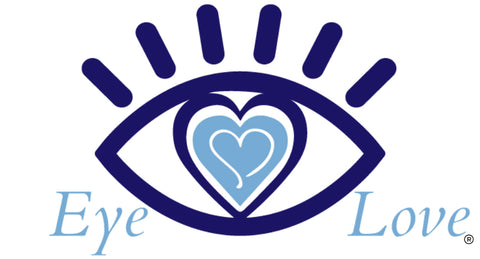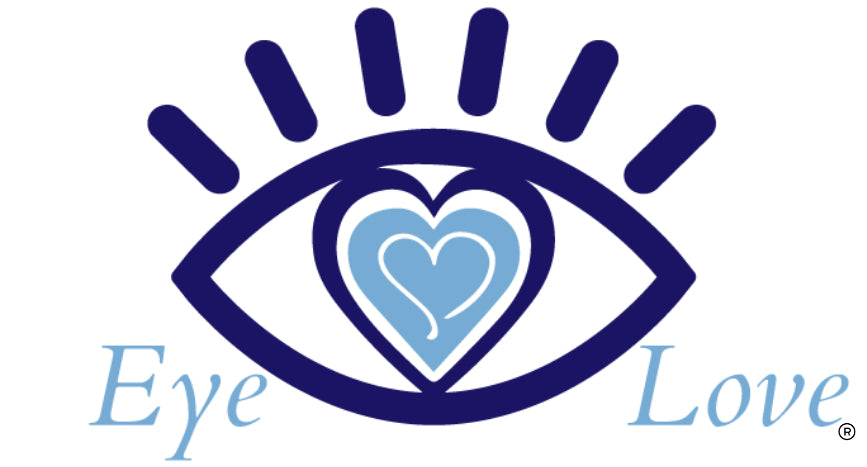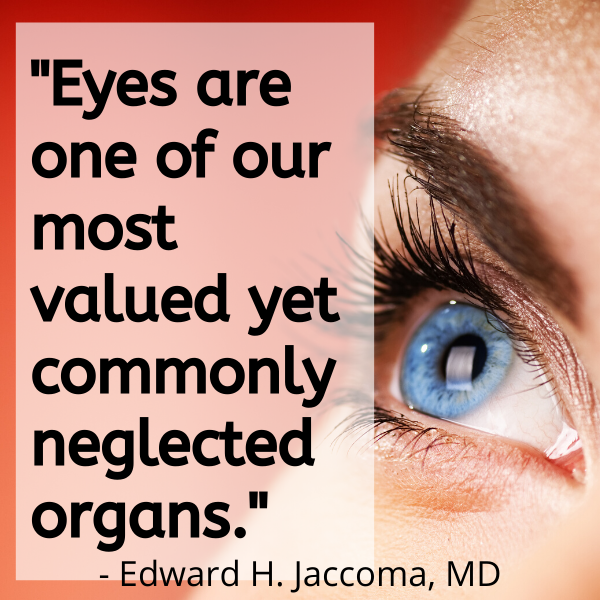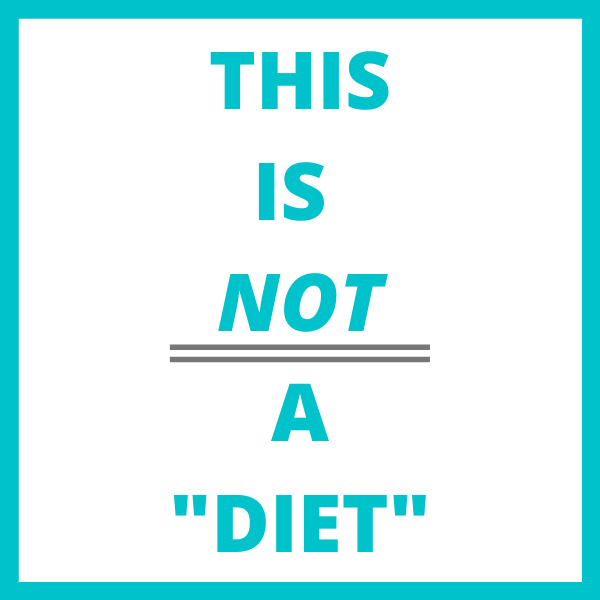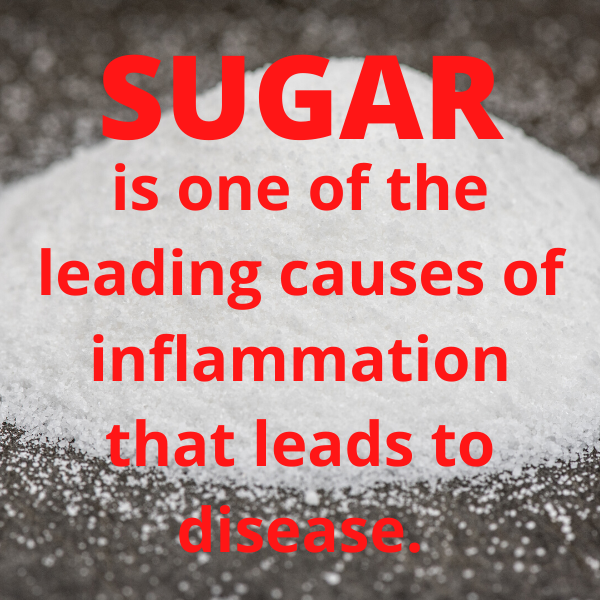The Rethinking Dry Eye Treatment eBook has been sent to your email or you can start reading right now on this page by scrolling down.
Acknowledgements
I wanted to thank my wife, Dr. Jenna Zigler, and my son, Jude, for helping me write this book. They put everything into perspective for me and, without them, this book would not have been possible.
I also wanted to thank the Dry Eye Syndrome Support Community. Starting this group in 2016 has literally changed the entire course of my life to serving those who suffer from dry eye. And it has been a fun ride serving and learning from you!
Prologue by Dr. Edward H. Jaccoma, MD
As a practicing ophthalmologist for over 30 years, I have seen all kinds of dry eye and dry eye related problems (including my own). This practice has taught me that dry eye is fast becoming a national epidemic – a plague that is largely, though unknowingly, self-caused.
Fast food, fast living with more time devoted to staring at screens and devices and less time to more physically recreational and then restful endeavors, drives our eyes at a pace our little tear glands can’t keep up with.
Worse, we train these glands that they are not needed because staring begets weak blinking and only strong blinks “milk” the glands into producing healthy tears. Without properly nourishing and using these glands, they block up and whither (or turn into nasty pimples we call styes). Without healthy tears, our quality of life declines. Eyes get red, irritated, tired and productivity and the “joy of life” starts to sag.
Refining my treatments for these conditions, I came upon a standard regimen that I called the “homework” and which I packaged into kits to make the basic products easy to obtain and affordable for my patients. I developed advice based on the work of others in the fields of sports medicine and nutrition that I found to work best in conjunction with the “homework” and I’ve taught this to countless doctors and patients over the years.
My typical patient encounter includes reminders that “we are what we eat” and that the glands important to making tears require good foods, enough water and the constant full blinks to nourish and exercise these glands into providing the tears that keep our eyes healthy and happy.
Looking for sources of reasonably priced products and easily accessed packaging of these products and advice, I came across Drs. Jenna and Travis Zigler and their company Eye Love. I found an echo of myself in their work. Much of what they tell you in this book is what I’ve tried to instill in my practice and there isn’t a word here that I can’t endorse.
Modifying my own diet and eye habits has helped me in treating my dry eye problem – as has the bountiful technologies that now help to better diagnose and treat my issues – and those of my patients. Treating the chronic, progressive disease we call “dry eye” requires the combined efforts of the patient and their knowledgeable eye care provider.
This book is a great first step down the path leading to happy and healthy eyes.
My advice: read this book, research the plentiful resources included on their website and see a competent dry eye specialist. Do what you have to in order to turn your problem around (or better yet, to prevent those problems). Eyes are one of our most valued yet commonly neglected organs and life is so much better appreciated when they are functioning at their best!
Sincerely,
Edward H. Jaccoma, MD
Introduction
“Nature knows when you are in harmony with yourself and your environment… We frantically go to a doctor to see if they can fix [the problem]. They can’t; only YOU can.” --Dr. Randine Lewis, PhD
Before we dive into this journey, I want to talk to all of you about the struggle of dry eye disease and disease in general. Our healthcare crisis in the United States has hit an epidemic. Diabetes, heart disease, metabolic syndrome and other inflammatory conditions are increasing dramatically with diabetes now affecting almost one out of every two Americans.
The Centers for Disease Control and Prevention (CDC) shows that 37% of Americans are obese.
THIS IS NOT YOUR FAULT.
It is the fault of a $1 trillion food industry trying to tell you what is “healthy” and what is “unhealthy.” Low-fat, low-carb, gluten-free, whole-grain, and high-fiber are all catchy terms used by the food industry to make you think something is healthy.
Then you read article after article about fat being bad, then fat being good, then eggs being bad, and then eggs being good, etc…, etc…
On top of that, conventional medicine simply throws medications on a problem of a certain area of the body. For example, if you have diabetes, take this pill to help your blood sugar levels. But rather than take a pill, why not look to find the underlying cause of WHY your blood sugar levels are off in the first place.
This is where functional medicine comes in. Functional medicine sees a problem and tries to figure out what causes the problem. It then makes changes to try and fix it.
It doesn’t matter what your genetics tell you (my parents were diabetic so I was destined to be too). You can reverse all that and live a happier, healthier life without medications and surgery.
Regardless of where you are in this dry eye adventure, know that from this moment forward, you have a choice - you can choose whether you want to feel amazing or just get by.
Take this opportunity to set the bar for how you want to live the rest of your life...feeling great or feeling lousy. The choice is YOURS. I promise that if you follow the steps laid out in the upcoming chapters, you will be feeling more incredible than you ever thought possible.
YOU are capable of far greater than what your limiting beliefs tell you. YOU can do this if you believe that you can. If you are not willing to make a change, then I would stop reading right here and reach out for a full refund as you will not like this book.
The next few chapters are from my deep dive into books, functional and holistic medicine, nutrition and conversations with leading experts in these fields. I had given myself two days to write the section on food helping your dry eye, and it took me almost a full year to complete version one. You are now holding version two in your hands, which took me another year on top of that. I am finishing this in January of 2019 more excited than ever to release this information and to help YOU on this journey to heal yourself.
Thoughts on Western Medicine
Now before you think I am about to bash Western medicine in the next section, I want to note that my wife, Dr. Jenna Zigler, and myself, Dr. Travis Zigler, are both Western medicine trained doctors. We practiced Western medicine for over 15 combined years. We still believe that Western medicine is amazing and saves lives everyday.
The unfortunate realization is that Western medicine (which is only one way of treatment) is this:
- Patient has a problem that needs to be addressed, so they head to their doctor.
- We use the newest medication to treat the SYMPTOM of the patient’s problem.
- If that treatment doesn’t take, we switch to another medication.
- Then, if that treatment doesn’t work, we have to resort to surgery to fix the problem.
Western society (patients) and Western medicine (doctors) are after, far too often, the quick remedies. We want results and we want them now.
We were taught this method of medicine...
We believed in this method of medicine...
Until our world came tumbling to a halt...
Our Shifting Belief from Western Medicine to Eastern Medicine
It was early 2015, and we had just moved to South Carolina, from Ohio, to start our two new optometry practices! I promised my wife that after we moved, we could start trying for children.
So we did…
Five months into trying to have children, we realized that it was not as easy as all our friends made it out to be. We started exploring what could be causing this problem. I was tested to make sure I was fertile, but that wasn’t the problem. Jenna was tested and found that she had polycystic ovaries.
Numerous lab tests were run, but aside from polycystic ovaries shown on ultrasound, hormone levels and nutrient levels were all normal. Because it appeared Jenna was “healthy”, we were diagnosed with unexplained infertility complicated by polycystic ovaries… the most frustrating of all diagnoses in those trying to get pregnant!
We began with a few monthly rounds of Clomid and metformin, which all failed to achieve the desired result. We were then prescribed Letrozole, in hopes that it would work in a different way. It didn’t. Through these pharmaceutical interventions come a lot of undesired side effects including sleeplessness, anxiety, mood swings, rage, thirst, and more.
Finally in July of 2016, we were told by our fertility doctor that we would have to do In Vitro Fertilization (IVF) if we were ever going to get pregnant. This costs anywhere from $10,000 to $25,000 with a 33% chance of success. Not to mention, Jenna would have to put a massive amount of expensive pharmaceuticals and chemicals into her body in order to have that small chance to conceive.
This is not including the emotional toll of IVF on both the woman trying to conceive and the husband as well. With that being said, there is a place for IVF and it has done amazing things for families, we just didn’t think it was for us.
The night before our first IVF appointment while lying in bed, I turned to Jenna and told her that I didn’t believe that IVF was right for us. I expressed that there had to be a better way, and she agreed. This led us on a journey to explore additional routes of medicine including Eastern medicine, which is about finding out what is causing this distress in your body and healing it from the inside out.
We were already eating a plant-based diet, with minimal meat consumption of about one time per month. We then switched to eating only organic food.
At the recommendation of a few friends, Jenna started receiving weekly acupuncture treatments. Her acupuncturist started her on a healthy, high fat diet (more on this later) and reduced the amount of carbs and sugar she was consuming. Four more months passed and still no results, although her progress with acupuncture looked promising.
In February, our acupuncturist told us everything that month looked perfect, and that we may conceive the next weekend. In the meantime, losing hope after two and a half years of trying, we scheduled an adoption meeting to begin the process.
The day before the adoption meeting, we took a pregnancy test… And it was positive.
And here I am writing this section of our book one year after our son Jude was born.
He is our miracle baby and continues to inspire and awe us everyday because he wasn’t supposed to even be here.
This shifted my belief in how I practiced medicine as an eye doctor. I started thinking that maybe every time I prescribe a medication I am just covering up a symptom to a much larger problem going on with the body. I started exploring different methods of healing disease from the inside out. Which leads me to the present day and writing this book for you.
The unfortunate realization is that there is no magic bullet. You cannot go on a diet, eliminate a food group, take a new medication or supplement or eye drop and expect all disease to go away.
There is so much noise out there on cutting fat and lowering your carbs to lose weight and fight disease, yet we are more stressed, sedentary, sleepless, inflamed, and dying of chronic diseases like heart disease, diabetes, cholesterol, and others. It doesn’t have to be this way, and that is what this book will help with.
The realization is that you need to take the steps necessary to promote a healthy lifestyle. You do not have to go through all of the recommendations in this book at once. You will get overwhelmed and be doomed to fail. What you can do is take it one step and one day at a time. When you finish taking action on one chapter and have it developed as a habit, move on to the next action item.
A brief summary of what this book will cover and how it will help you:
- Hydration to flush and keep all systems going
- Nutrition and food as the fuel your body needs to reduce inflammation and repair itself
- Movement to fill your body with oxygen
- Minimizing toxins and reducing stress (my favorite section of all)
- Supplementation
- How we treat dry eye in practice and other traditional dry eye treatments
Please know that the methods I discuss in this book are NOT just for dry eye, but for healing the entire body of ailments such as high blood pressure, diabetes, cholesterol, arthritis, infertility, and any other symptoms you have.
With all that being said, let’s jump into the strategies that we now teach to thousands of people around the world.
Enjoy this new opportunity to take back your life and TAKE ACTION to feel happier with yourself and feel more confident than ever before.
REMEMBER ONE THING. YOU PICKED UP THIS BOOK BECAUSE WHAT YOU ARE CURRENTLY DOING AND WHAT YOU ARE CURRENTLY PRESCRIBED IS NOT WORKING TO YOUR EXPECTATIONS, AND YOU ARE READY FOR A CHANGE.
This new journey starts with what you put into your body. Your body wants to heal itself. It wants to be healthy and well, and it fights to do this on a daily basis provided there is nothing getting in the way. One of the biggest things that gets in the way is what we put into our body.
Food and water is powerful medicine, so let’s dive in.
At the end of each section or chapter there will be action items. To get action item worksheets visit www.rethinkingdryeye.com to download and print.
ACTION ITEM
- Throw out all your limiting beliefs, your can’ts, wont’s, and excuses. You can do this if you believe you can do it. You are here because you want a change in your life. You want to feel better. Make that change and take back control of your life.
Part 1: Rethinking Dry Eye
Chapter 1 - Hydration and Drinking Plenty of Water
Treatment for ALL disease should start with drinking plenty of water daily. Seventy-five percent (75%!!!) of us walk around dehydrated. You should be carrying around a reusable water bottle with you at all times (do yourself and our planet a favor and avoid disposable plastic water bottles).
Follow the motto, if you think, drink! This means that every time you think about drinking water, you should take a drink. We have a survival mechanism that tells us we are starting to get thirsty before we even do.
What Dehydration Causes…
Dehydration can cause a list of ailments and symptoms that are very similar to disease. A lot of people who are just dehydrated are diagnosed with disease, when a simple glass of water (or about ten glasses per day) can help eliminate these symptoms. Dehydration can cause dry eye, brain fog, fatigue, sickness, and overall malaise.
Does this sound familiar? Get drinking!
Symptoms of dehydration include:
- Thirst
- Dry mouth
- Fatigue
- Decreased urination or deep yellow or orange urine
- Headache
- Dizziness
How Much to Drink?
This obviously depends on the size of the person, but a typical recommended amount per day is two liters, which is about 10-8 ounce glasses of water (think dinner glasses). 10 glasses of water per day may sound daunting but, I assure you, with a system and reusable water bottle in place, it is easy to surpass that.
Drink great quality water that is free of heavy metals (often found in tap water). Make sure you have a heavy duty filter. Most refrigerator filters do not filter out everything but are a good start. We purchased and recommend the BIG Berkey water filtration countertop unit. You can also have an in-house filtration system installed under your sink.
Avoid beverages and foods which have diuretic effects such as coffee, caffeinated teas (limit to less than two cups per day), and alcohol (less than one standard drink per day). If you must have your caffeine, make sure you’re drinking at least that same amount of water right after to avoid dehydration. Also drinking organic coffees and teas will make a big difference in the amount of toxins you are putting in your body.
Toxins found in typical tap water and other drinks can build up over time causing inflammation and other chronic problems. Investing in a high quality filtration system will pay dividends for your health down the road. The BIG Berkey, mentioned above, costs about $200 per year, which is about the cost of one doctor visit. Drinking filtered water will save you at least one doctor visit per year.
Side note: Dr. Travis Zigler drinks two liters right after waking up to hyper-hydrate (more on this later). Dr. Jenna drinks at least 3-32 ounce water bottles full daily, spacing it out throughout her day (one full bottle is consumed before she eats anything that day).
Hyper-Hydration & The Effects of Proper Hydration
Hyper-hydration is a term given to drinking a lot of water in a short period of time to flush the body with water. Wake up with a hyper-hydration session of 16 to 32 ounces of water (two to four cups, 0.5 to 1.0 liter). You can add a squeeze of lemon or apple cider vinegar to your water for enhanced effects. It will take your body a few days to adjust to drinking this much first thing, but the effects are well worth it!
Flushing the body with water and staying properly hydrated has numerous effects on the body including boosting your metabolism by 30-50% for the next two hours (which is like working out). It will flush your circulatory and lymphatic system of toxins accumulated in the body throughout the day before, as water is the purge vehicle for toxins.
Along with flushing the body of these toxins, proper hydration lowers the noise in your body and connects your mind to your body, which means less brain fog and more clarity. You will feel the effects of hydration after three days of using hyper-hydration in the morning. You will feel clearer and more alive than ever before.
Three-Step System To Stay Hydrated
- Drink 16 to 32 ounces (0.5 to 1.0 liter) of water right after waking up, before eating. The benefits of hyper-hydration first thing in the morning are that you purge toxins, flush the circulatory & lymphatic system, and boost metabolism.
- Keep close proximity to water. Everytime you look at your water bottle, take a drink.
- If you think, drink! As stated above, if you think about drinking water, it is your body’s way of telling you it needs some water. This will help you stay hydrated all day and lead to a 30 to 50% increase in metabolism.
ACTION ITEMS
- Drink 16 to 32 ounces of water right after waking up (hyper-hydration), before eating.
- Drink 8 to 16 ounces of water 10 to 15 minutes before every meal or snack.
- Purchase a 32 ounce (or larger) water bottle and keep it near you at all times. Whenever you look at your water bottle, take a drink. “If you think, drink”.
- Purchase a Camelback Backpack for working out.
- Purchase a BIG Berkey Water Filtration Kit to decrease toxins in your drinking water.
Head to www.RethinkingDryEye.com under the Hydration tab to print your checklist for drinking more water. The patients and readers who take action at the end of each chapter see exponentially better results and decrease their dry eye symptoms significantly. TAKE ACTION!!
Chapter 2 - Introduction to the Power of Food
“Diet is HUGE! It has an enormous role in every aspect of our health across the board. Switching to an anti-inflammatory diet is the number one thing I recommend.” - Katherine Thurer, MD
The Word “Diet”
I use the term diet in this book a lot. I do not believe in dieting and the word diet is used to describe what you will be eating. You are not going on a diet. You are starting a new diet of healthy foods that will completely transform your life, and if you stick to this healthy, new lifestyle of eating, you can eat as much as you want inside of it.
Again, you are not going on a diet, but rather making a choice to live a better, healthier life.
What is Disease?
The most commonly cited causes of disease are lack of oxygen, inflammation, hormonal imbalance, and microorganisms (bacteria, viruses, etc…). There are numerous culprits that can lead to any of these four causes and they can include: animals, dairy, sugar, and toxic chemicals.
These foods can increase estrogen levels, flood the body with toxic chemicals, and carry life threatening bacteria. We will explore each section in much more detail later.
What you put in your mouth is one of the biggest factors affecting how your body works and feels. The cleaner, more oxygen-pumping, anti-inflammatory, hormone balancing, and nutrient-filled food you put in your body, the better your body can do what you ask of it.
I love the quote at the beginning of this chapter by Katherine Thurer, MD and I think it is worth repeating and reading one more time. “Diet is HUGE! It has an enormous role in every aspect of our health across the board. Switching to an anti-inflammatory diet is the number one thing I recommend.”
Embracing Foods That Heal
Food can be the ultimate source of healing or the ultimate destruction of your body. Once you clear away the junk that’s clogging your body from years of poor diet, you will unclog your mind as well. You’ll be able to tap into your healthiest and happiest you.
By the way, this junk food and poor diet that you might be eating is NOT your fault. It is the fault of the government, big pharmaceutical companies, and factory farms, which have deep pockets to fund campaigns to make you think that what you are eating is healthy.
So where does this transformation begin?
All of this starts with plants!
A healthy, plant-based diet is the consumption of nutrient-dense plant foods while minimizing (if not eliminating) processed foods, oils, and animal foods (including dairy products and eggs). It encourages lots of vegetables (cooked or raw), fruits, beans, peas, lentils, seeds, and nuts.
Plants help balance your hormones, maintain a stable blood sugar and pressure, and generally fuel all of our systems in a cleaner, more efficient way. Plant-based foods are nature’s way of giving us sun-powered health in a delicious, ready-to-eat form.
There are virtually no nutrients in animal-based foods - including protein and iron - that aren’t better provided by plants. Plants can supercharge your body, reduce diseases like cancer, heart disease, diabetes, osteoporosis, and help you live the life you’ve always dreamed of.
Research done by Drs. T Colin Campbell, Caldwell B Esselstyn Jr., and John McDougall have shown that changing diet to include more plant based foods and less animal-based foods can help you live longer, feel younger, lose weight, have more energy, preserve your eyesight, keep your mind sharp, and have a more vibrant sex life. They also discuss that it can eliminate your need for pharmaceutical drugs, especially for treating things like depression, type 2 diabetes, and high blood pressure.
Fiber
Fiber is at the top of the list of health benefits of plants. Dietary fiber is found in vegetables, fruits, whole grains, and legumes. Don’t worry about the foods that contain all these healthy compounds right now, because we will have lists and examples for you later in this book.
Fiber helps “scrub” our intestines clean of all the junk that inhabits them on a daily basis. Fiber cannot be digested by our bodies and passes intact throughout our digestive system, unlike fats, proteins, or carbohydrates, which our body breaks down and absorbs.
Since we don’t digest fiber, it helps move things along from entrance to exit, which helps prevent and relieve constipation. Fiber also absorbs chemicals and toxins along the way. The more fiber you eat the lower your risk for diabetes, high blood pressure, high cholesterol, and rectal and colon cancer, while helping you maintain a healthy weight.
The easiest way to add more fiber to your diet? Eat more vegetables, whole fruits (not juice) and beans.
A lack of fiber can cause constipation, bloating, hemorrhoids, gas, and diseases like intestinal or colon cancer.
Also, when eating foods with high fiber, drink plenty of water as fiber works best with water (you should be drinking more water anyway).
Phytochemicals
Phytochemicals, such as carotenoids, are found in plants and act like shields that soak up invaders and keep them from harming the plants’ tissues. Our bodies cannot fight against these free radicals, industrial pollutants, or toxins. These cause our bodies and tissues to start breaking down, which can lead to Alzheimer’s, dementia, cataracts, hardening of the arteries, cancer, emphysema, and arthritis.
If we eat plants, they lend us their powers to fight these toxins. Each plant has its own fighting ability, which is why a variety of plants is key to your diet.
A side bonus of phytochemicals is that they help with wrinkles by protecting your skin from damage and helping your skin produce more collagen. Whole grains are packed with B-complex vitamins which help with glowing skin.
Carotenoids are responsible for giving fruits and vegetables like carrots, tomatoes, and bell peppers their bright orange, yellow, and red hues. Other plant-based foods with carotenoids include spinach, kale, squash, kiwi, and grapes.
A few types of carotenoids, including zeaxanthin, lutein, and beta carotene, play a critical role in maintaining eye health. They benefit our eyes by guarding against vision loss, while improving one’s ability to see colors and fine detail. Additionally they also play a role in protecting our eyes against the damaging effects of UV light we encounter outdoors as well as blue light from our computers, phones, tablets, and televisions. The lutein and zeaxanthin pigments in foods and through supplementation can also help prevent cataracts and worsening of macular degeneration.
Fat
Oh fat… how I love thee, but you are one confusing nutrient.
The obesity epidemic that has hit the United States has been battled in a very interesting and counter-productive way for the past several decades. We were taught to believe (again by the food industry) that eating low-fat products will help us lose the fat we have in our body.
To replace this low-fat want, carbohydrate intake has increased dramatically. Dr. Sylvan Lee Weinburg, former president of the American College of Cardiology said it best:
“The low-fat, high-carbohydrate diet… may well have played an unintended role in the current epidemics of obesity, type 2 diabetes, and metabolic syndromes. This diet can no longer be defended by appeal to the authority of prestigious medical organizations.”
The opposite of this is true as well. A high-fat, low-carbohydrate diet (looking at you Paleo and Dr. Atkins) can be just as harmful because GOOD carbohydrates are needed to help fuel your body.
Finding the balance between GOOD fats (olive oil, avocados, nuts, seeds, organic, naturally raised animal protein) and GOOD carbohydrates (fibrous, energy making carbs) carry great nutrients that our body needs. A more complete list and more compete meal charts will be included later in this book.
The grocery store unfortunately makes things even more confusing as all the labels discussed earlier are found in abundance and may have toxic ingredients even though one thinks they are healthy. These labels include, but are not limited to, low-fat, low-carb, gluten-free, whole-grain, all-natural, and high-fiber.
Fat has its place in your diet and can be very healing, just make sure you stick to the good fats, those that are organic, and usually plant based like avocado oil, olive oil, and coconut oil, and avoid the bad fats that are usually meats that are high in saturated fats and man-made oils like most “vegetable” oils and margarine (more details later).
Sugar
Sugar is another interesting nutrient that has a ton of controversy. We are told to eat low-sugar, which means low-carbohydrate diets in order to lose weight. The key to this isn’t the sugar itself, but rather the form of sugar you eat.
Sugar in its natural form, inside fruits and vegetables, is very good for the body and can be used by the body. Eating whole fruits and vegetables is a huge part of the meal plans that I will present later in this book. The key thing with this is to make sure it is in whole food form and not broken down and processed.
Where sugar takes a turn for the worse is when it is processed and refined down to the little white crystals that you are so used to seeing. Added sugar is everywhere and if you are not careful about reading the ingredients on labels, then you could be consuming a ton of added sugar in your diet on a daily basis.
Here is a brief list of added sugar food items: cakes, cookies, donuts, crackers, pop (soda), bread, ice cream, fruit juices, jellies, jams, some peanut butter, sauces, salad dressings, alcohol, coffee drinks (not black coffee), sports drinks, energy drinks, and pies.
To know if the food you are eating contains added sugar you just need to check the ingredient list for the word sugar… But wait, there are also a ton of names that are given to other forms of sugar that is not made from sugar cane but rather from corn. We actually consume more sugar from corn than we do from sugar cane.
A list of sugar or sugar derivatives to watch out for in the ingredients list of food is sugar, corn syrup, high fructose corn syrup, sucrose, barley malt, dextrose, maltose, agave, cane juice, cane syrup, fruit juice concentrates, honey, and rice syrup. This is a limited list as there are others, but these are some of the most common to look for.
Sugar intake has been linked to many of the diseases that plague Americans today, such as tooth decay, obesity, type 2 diabetes, heart disease, high cholesterol and high triglyceride levels.
A side note on fruit juices. Juicing has become incredibly popular as well as drinking orange juice or other juices from your grocery store. Stay away from all fruit juices, as you are not getting any of the fiber of the fruit itself and are just consuming sugar and water, which negates most of the benefits of fruits and vegetables. Eliminating your daily orange juice could mean dropping 10-15 pounds in the next few months. Try it and see!
A key takeaway is to avoid anything in a box or can, as the likelihood of sugar being added is high, and eat fruits in whole food and not juice form. Another takeaway is that sugar is one of the leading causes of inflammation that leads to disease. This includes inflammation that contributes to dry eye disease.
Let’s dive into inflammation and what it causes.
Chapter 3 - Chronic (Long-Standing) Inflammation
